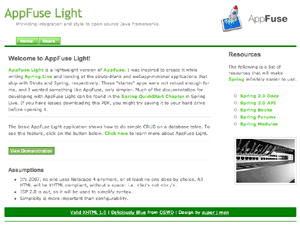The Web Framework Smackdown Questions
I'm doing my Web Frameworks Smackdown this morning at TheServerSide Conference. A few weeks ago, I asked What Would You Ask the Web Framework Experts? on Javalobby and LinkedIn. Here's a summary of those questions:
- What is the overall performance of your framework as it compares to others?
- How does your web framework position themselves in relation to Web Beans?
- How easy is it to create a re-useable component in your framework? Is it as easy as sub-classing an existing component?
- What is the key differentiating characteristic of your framework that makes it better than the rest?
- What do you think about the various scopes introduced by Seam, e.g. conversation vs request or session? If you support these additional scopes, do you also provide some sort of concurrency control?
- Why can't we, the Java Community, come together and adopt the best application framework and settle the web development subject?
- What are you doing to help with developer productivity?
- 2008 is a huge year for the mobile web. How do you help developers build great mobile web applications?
- If you couldn't use your framework, what would you use and why?
- How do you enable rich Ajax applications?
- Can a developer make a change to source, and hit RELOAD in the browser to see the change? If not, why not?
- What do you think about the whole Flex revolution, and do you think you are competitors to this technology?
- How easy is it to create a module and plug it into a bigger application, complete with configuration, code, and view?
Of course, there's many more questions on the aforementioned pages, these are just some that I hope to ask during the panel. Sitting on the panel: Don Brown (Struts 2), Keith Donald (Spring MVC), Ed Burns (JSF), David Geary (GWT), Geert Bevin (RIFE/OpenLaszlo) and Justin Gehtland (Rails). I tried to get Flex and Grails folks, but they'd either left the conference already or are speaking at the same time.
Update: InfoWorld has some modest coverage of this event in Web frameworks debated at TheServerSide Java Symposium.


 ).
).
